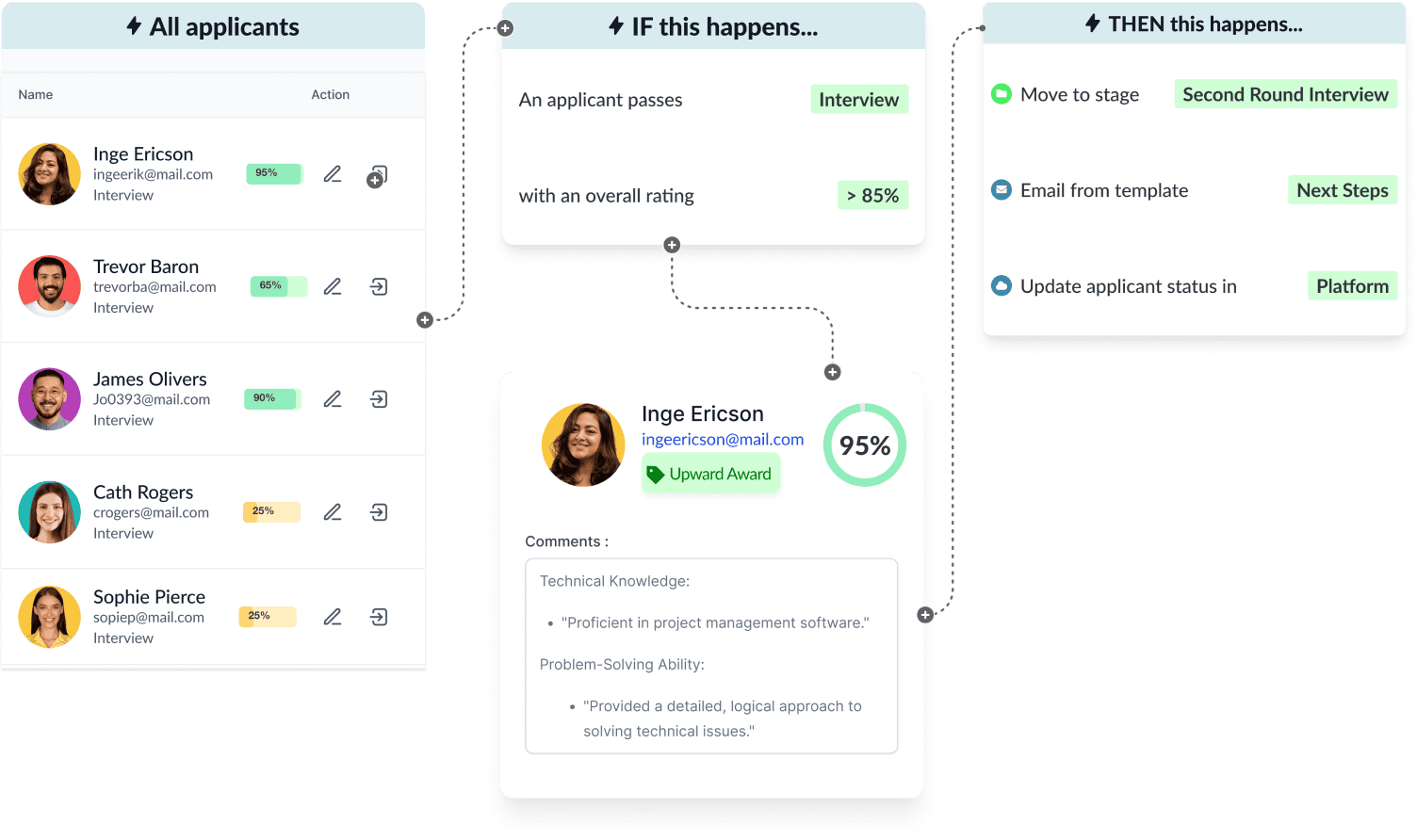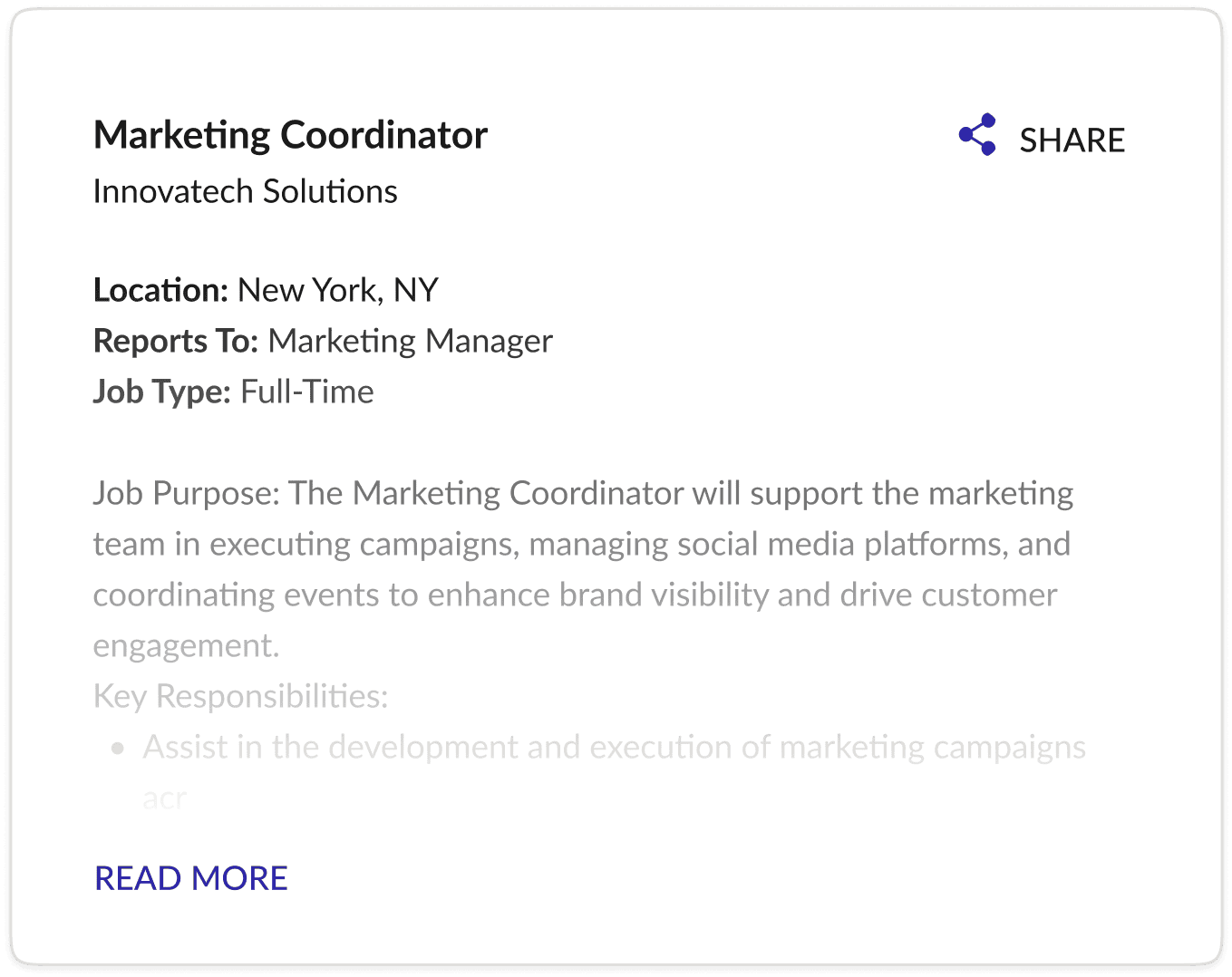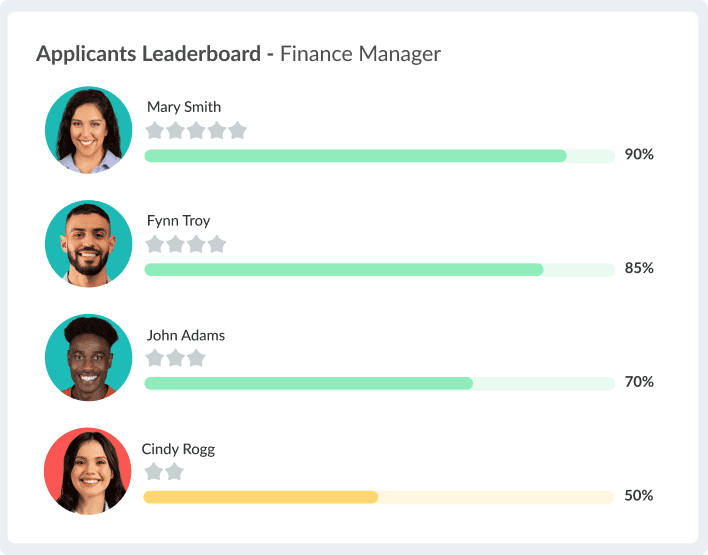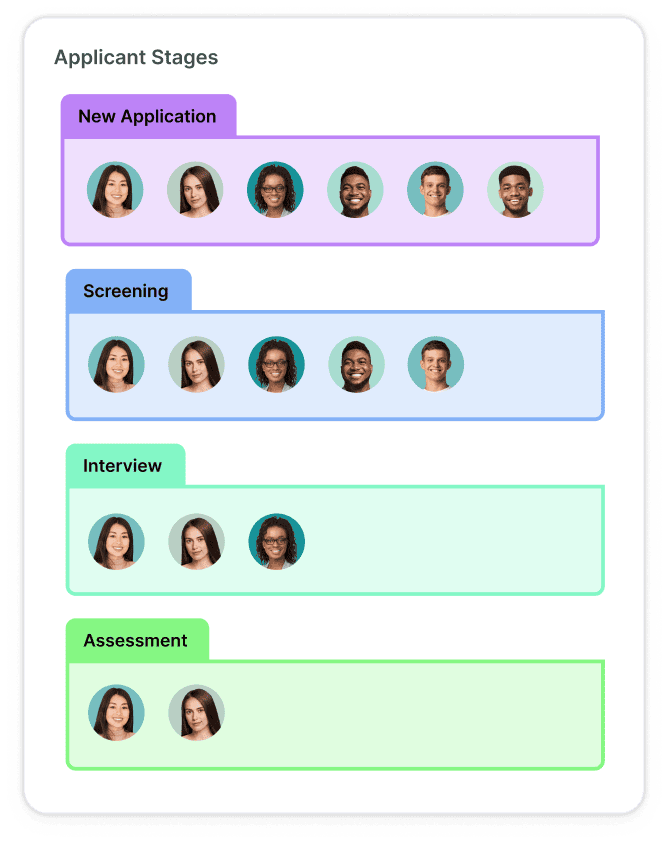
How To Conduct a Structured Interview
Learn how to conduct structured interviews effectively with our comprehensive guide.

These days, most applicant tracking system features extend beyond a resume filter solution and database. For example, helping to provide a positive candidate experience and streamline hiring processes at scale. With an array of features and integrations available, how do you know you’ve chosen the right system to support your entire hiring cycle, now and into the future?
With the amount of time and research that goes into evaluating available ATS features, you’ll want to find a solution that meets all of your needs: from attracting talent to onboarding new hires. Most platforms offer integrated tools such as interview scheduling, skills testing, and video interview software to create efficiencies throughout the hiring process.

After someone submits their resume and progresses through your hiring journey, you’ll need to maintain all their data in one place to prevent anything from getting lost. Having to maintain several hiring channels (spreadsheets, email, etc.) is not only tedious, but it’s also risky. Ensuring your data is protected is equally important.
Make sure you consider functionality around:
Access and login verification
Data encryption and protection
Retention, disaster recovery, and uptime
Compliance with industry-recognized security standards
Job requisitions and postings:
Posting a new opening involves many tasks. To streamline the process involved in creating a new job description and obtaining internal approvals, your platform should integrate your requisition process with automation. Once the description is ready, post it to your careers page and preferred job boards through the platform. One-click job board posting functionality helps you post to multiple boards and maximize visibility.
To streamline the experience for your candidates, look for ATS features that let them submit a resume without having to log in or create credentials. Even better, allow them to go straight from your application page to a skills test or pre-recorded interview to eliminate their wait time.

Once you’ve begun receiving applications, you want to keep the momentum going. Most systems offer automated resume screening to help keep things moving while introducing efficiencies.
Interview scheduling and calendar synchronization
Resume screening with filters and tags
Candidate advancement to the next stage
Weighted applicant scoring from skills tests and interviews
Mobile-friendly capabilities create a positive experience for your hiring team. Your team can view, evaluate, and track candidates on their mobile phones. In 2021, the global SMS open rate was an impressive 95%.
ATS features should help facilitate decision-making and onboarding. Offer letter functionality means your team can track and store offer letter changes in the candidate profile. Most systems can also automate reference checks without the time or resources needed from your team.
Integration with your HRIS or payroll tools allows you to seamlessly transfer candidate profile data from your applicant tracking database and continue maintaining it now as employee data. Many automated hiring systems also allow you to begin onboarding candidates on the platform, including sending welcome letters and pre-start date information.
Hiring initiatives and goals are never static. While your strategy might be focused on relationship management now, you may wish to focus on attracting top-of-funnel talent six months or even a year from now. You might be looking to scale hiring initiatives or address upcoming seasonal peaks.
Either way, your system’s features should be versatile to meet current and future needs.

To scale hiring initiatives in the future, look for ATS features that use automation throughout the entire journey. Otherwise, you risk increasing your workload for specific tasks if your applicant volumes increase.
Custom Careers Pages are an effective way to attract top talent. By using targeted messaging, you can capture the attention of those best suited for the role and aligned with your brand. Some custom careers pages can detect where viewers are located and then show those individuals the most relevant openings based on where they are.
Using an API to connect with your job distribution and marketing channels (careers page, job boards, social media) will allow you to see where your best candidates are submitting a resume, and evaluate your sourcing channel effectiveness.
Saving talent pools means you can foster close relationships with candidates who are the right fit for your existing and future roles.
ATS features that facilitate candidate relationship management:
Easy-to-use search features
Use keyword searches to identify candidates to reach out to or advance to another hiring phase.
Social media scans
Adding what candidates are talking about online to their profile provides insight into who they are and what they’re looking for in an organization or role.
Targeted outreach
Create ongoing hiring campaigns for passive candidates who may have the niche or hard-to-find skills you need.
Scheduling automation
Make scheduling interviews easier for candidates once they’ve applied. Give them time slot availability and the ability to choose based on what works for them.
Automated communications
Send candidates personalized SMS and emails at key hiring stages - including onboarding with advanced automation.
Saved talent pools
Maintain the profiles of unsuccessful candidates. Attach notes and set reminders to re-engage with them in the future.

Does your automated hiring system come with a support team for users and applicants? Real-time assistance can address any questions or technical needs of candidates joining an interview.
Ongoing training is equally important because it ensures high user adoption. It also means that as hiring initiatives to expand across departments, all of your internal users are familiar with the platform and features.
To ensure your future hiring initiatives are successful, look for a vendor that works with you in tailoring workflows and optimizing your processes. It will allow you to improve your hiring processes for faster hiring, compliance, and better hiring decisions.
Rather than looking for an out-of-the-box solution, make sure the automated hiring system you choose can be tailored to mirror your existing workflows. Your hiring stages, approvals, and internal frameworks are unique to your organization and the system should be able to accommodate them so that you don’t have to change your entire hiring process to suit the technology.

It’s important to consider a system’s capabilities in relation to implementation and onboarding since getting these stages right will set your team up for success.
Here’s what you should be looking for in a system:
A dedicated in-house implementation team who understands your hiring goals
Custom workflow creation and user acceptance testing to ensure high adoption
Ongoing advisory and support for process optimization to meet your goals
Custom branding: careers pages, job descriptions, applications, and communications
When evaluating a platform’s automation, look for flexibility. There are several key hiring stages and aspects where you’ll want to customize your workflows and make modifications.

Job requisition workflows:
Automate the entire process as a single workflow from the initial request form down to final approval. Future positions may require more or fewer approvals internally, depending on the department and seniority of the role. Your system’s automation should be flexible enough to accommodate changes in your workflow and approval process.
Candidate advancement workflows:
Advance candidates, or save them in a separate talent pool for future consideration. Candidates are automatically advanced based on pre-set criteria such as resume screening, skills tests, and interview scores. Each new role you hire for may have different pre-set criteria or stages. For example, perhaps the next one includes skills testing or a panel interview.
Hiring manager notifications:
Send your managers reminders to complete tasks or let them know that a candidate has moved to the next stage. You can tailor communication content and timing based on the role, hiring stage, or manager.
Diversity and inclusion frameworks:
The platform should incorporate your DEI practices into your workflows. For example, offering accommodations to candidates when they apply. It can also reduce the risk of bias through anonymous resume review. As your frameworks evolve, your automated hiring system should be able to as well.
Reporting workflows:
Distribute reporting dashboards to all organizational stakeholders with automation or through an API.
Most automated hiring systems have reporting features built-in. However, your process isn’t the same as any other organization. Keep an eye out for tailored reporting that you can use to optimize your performance metrics and accelerate decision-making. Configurable dashboards give each team member and stakeholder the information they need, whether departmental performance, hidden trends among your talent pool, or overarching business drivers.
Make sure the platform provides custom reporting on your organization’s:
Want a pulse check on how candidates really feel after their hiring experience with your organization? 49% of job seekers say they would decline an offer if they’ve had a bad candidate experience. ATS features can include candidate surveying to capture their experience so you can optimize your process accordingly.
When you submit your resume to a role posted online, the organization likely uses a system to ‘read’ your resume’s contents. This is referred to as “resume parsing” within an organization's automated resume screening process. To ensure your resume is compatible with their software, you should consider keeping your formatting simple and avoid images. For more on ATS requirements and what resume parsing means when applying online, look at our article “What’s an ATS-Friendly Resume and How Do You Make One?”

Custom workflow automation that evolves and grows with your business
Learn more about VidCruiter’s applicant tracking software
An API allows you to plug in to other HR tools along the hiring journey, such as skills testing or interview tools. Data flows into the system in real-time to ensure candidate profiles remain updated.
Most platforms offer the same core functionality, which includes an applicant-tracking database, candidate tracking, and candidate relationship management through automated communications. These features help HR teams spend less time on administrative tasks and more time with qualified candidates.
Automated hiring systems begin to differ in their customization and ability to meet different strategies and goals.
A definition of resume parsing is the method in which an organization’s system analyzes your resume’s contents and reorganizes it into a ‘candidate profile’ in their applicant tracking database. Meaning that their software reviews your resume before a member of their HR team. Most HR teams will use automated resume screening and resume parsing to spend their time reviewing a much shorter list of candidates.
Some platforms are best suited to small organizations and start-ups, while others support larger organizations and global recruitment initiatives.
Platforms and their features also differ from industry to industry. For example, a restaurant or hotel chain may be looking for a system that features Custom Career Sites and advertising to widen its applicant pool and ensure brand and candidate alignment. While a government agency may be interested in features that allow them to maintain compliance with internal standards and DEI frameworks.
Modernize your hiring process with expert insights and advice.